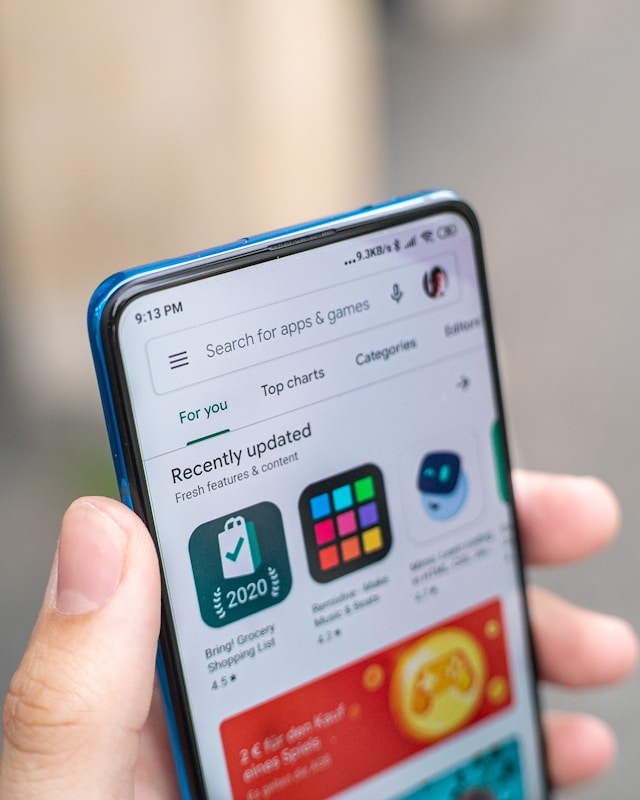Look, I’ve been watching businesses struggle with the same problem for years now. They build a beautiful website that looks great on desktop, maybe even springs for a mobile app, and then wonder why their conversion rates are still terrible on mobile.
The truth? Most companies are still fighting yesterday’s battle while their customers have moved on to expecting something completely different.
Your customers don’t want to choose between a clunky mobile website and downloading yet another app they’ll probably delete in a week. They want something that just works—fast, reliable, and without the hassle. That’s exactly where Progressive Web Applications come in, and honestly, it’s about time more businesses caught on.
The Real Problem Nobody Talks About
Here’s what I see happening every single day: businesses pour money into traditional web application development solutions in Coimbatore and other markets, only to watch potential customers bounce because their mobile experience feels like it’s stuck in 2018.
Mobile users are ruthless. They’ll abandon your site if it takes more than three seconds to load. They won’t download your app unless it solves a massive problem for them. And they definitely won’t put up with websites that feel clunky or broken on their phones.
Meanwhile, mobile commerce isn’t just growing—it’s completely taking over. We’re looking at mobile accounting for over 70% of all online sales by 2025. If your mobile experience sucks, you’re basically telling the majority of your potential customers to shop elsewhere.
PWAs: Finally, a Solution That Makes Sense
I’ll be honest—when PWAs first started gaining traction, I was skeptical. Another tech buzzword that would fizzle out in six months, right?
Wrong. Dead wrong.
Progressive Web Applications have quietly become one of the most practical solutions for businesses that need to deliver exceptional mobile experiences without breaking the bank or maintaining multiple codebases.
Think about it this way: PWAs give you the speed and functionality of a native app, but users can access them instantly through any web browser. No app store downloads, no waiting for approvals, no separate iOS and Android development cycles.
Companies like Twitter and Pinterest didn’t adopt PWAs because they were trendy—they adopted them because they work. Twitter Lite (their PWA) loads in under 3 seconds even on slow networks and uses 70% less data than their native app.
Speed That Actually Changes Everything
Every second your mobile site takes to load costs you customers. That’s not marketing speak—that’s measurable reality.
Google’s research shows that bounce rates increase by 32% when page load time goes from 1 to 3 seconds. By the time you hit 5 seconds, you’ve lost more than half your visitors.
PWAs solve this in a way that traditional websites simply can’t. After the initial load, they cache critical resources locally on the user’s device. This means return visits often load instantly—literally faster than the time it takes to blink.
I’ve worked with web and mobile application development services teams who’ve seen load times drop from 8-10 seconds to under 2 seconds just by switching to a PWA architecture. The business impact is immediate and measurable.
Reliability When It Matters Most
Nothing kills trust faster than a website that stops working the moment someone’s internet connection gets spotty. Unfortunately, that’s exactly what happens with traditional sites.
PWAs handle unreliable connections gracefully. When the network is slow or intermittent, a well-built PWA continues functioning with cached content. Users can still browse products, read service descriptions, even fill out contact forms that sync once connectivity returns.
This isn’t just a nice-to-have feature—it’s essential for businesses serving customers in areas with inconsistent internet infrastructure. And let’s be real, that’s pretty much everywhere when people are on mobile.
The Mobile Experience Users Actually Want
Users want app-like experiences, but they don’t want the friction of app installation for every business they might buy from once or twice a year. 
PWAs bridge this gap perfectly. They feel like native apps—smooth scrolling, intuitive gestures, instant responses to touch. But users can access them immediately and add them to their home screen with a single tap if they want to.
Push notifications work just like they do in native apps, which means businesses can re-engage customers without requiring an app store download. For saas app development company clients, this is game-changing for user retention.
Why Traditional Approaches Are Becoming Obsolete
Building separate native apps for iOS and Android is expensive and slow. You need different development teams, different codebases, different testing cycles. Then you have to deal with app store approval processes that can delay launches and updates.
Users are getting pickier about app downloads too. The average smartphone user downloads zero new apps per month. Zero. They’re not excited about filling their phones with more apps unless those apps provide exceptional, ongoing value.
Traditional responsive websites are better than nothing, but they still feel sluggish and awkward compared to modern expectations. Users notice the difference, and they act on it by leaving for competitors who provide better experiences.
The Business Case That Actually Matters
PWAs typically cost 60-70% less to develop than building equivalent native apps for multiple platforms. You maintain one codebase instead of three or four. Updates deploy instantly without app store delays.
But here’s what really matters: they convert better.
Pinterest saw their weekly active users increase by 103% and time spent on site increase by 296% after launching their PWA. Trivago’s PWA led to a 150% increase in people who added the app to their home screen.
These aren’t fluffy engagement metrics—they translate directly to revenue. When web app design company professionals focus on PWA development, their clients typically see measurable improvements in conversion rates within the first quarter.
Different Business Types, Same Benefits
Service-based businesses use PWAs to create more engaging consultation booking systems and client communication tools. E-commerce companies see dramatic improvements in mobile checkout completion rates.
B2B companies are discovering that PWAs make excellent sales tools and customer portals. The key is working with experienced web and mobile application development company teams who understand how to optimize PWA features for specific business models.
The most successful implementations focus on the core user journey first. You don’t need every feature to work offline, but the most important customer interactions should be bulletproof regardless of connection quality.
Getting Started Without Getting Overwhelmed
Start by honestly evaluating your current mobile experience. Use your own website on a smartphone with a mediocre connection. Time how long pages take to load. Notice where the experience feels clunky or frustrating.
That’s what your customers deal with every day.
PWA development requires specific expertise in service workers, caching strategies, and progressive enhancement. Working with custom web app developer professionals who specialize in PWAs is worth the investment—the technical details matter enormously for performance and reliability.
Don’t try to replicate your entire website as a PWA on day one. Focus on the customer interactions that drive the most business value. Get those working flawlessly, then expand from there.
The Reality Check
PWAs aren’t magic. They won’t fix fundamental problems with your business model or value proposition. But if you’re losing customers because of poor mobile experiences—and most businesses are—PWAs offer a proven path to improvement.
The technology has matured beyond the experimental phase. Major browsers support PWA features reliably. Development tools and frameworks have evolved to make PWA creation more straightforward.
The businesses that adopt PWAs early in 2025 will have significant advantages over competitors still wrestling with traditional mobile solutions. The question isn’t whether PWAs will become standard—it’s whether you’ll be ahead of the curve or scrambling to catch up.
Frequently Asked Questions
How much should I expect to invest in PWA development?
PWA development costs vary significantly based on complexity, but most businesses spend 40-60% less than they would building equivalent native apps for multiple platforms. Simple PWAs might cost $15,000-$30,000, while complex e-commerce or SaaS PWAs can range from $50,000-$100,000+. The key factor is feature complexity, not the PWA technology itself. Most businesses see positive ROI within 8-12 months through improved conversion rates and reduced ongoing maintenance costs.
Will a PWA work for my industry and customer base?
PWAs work exceptionally well for most industries, particularly retail, hospitality, professional services, and SaaS businesses. They’re especially effective when your customers need quick access to information or services on mobile devices. The main limitations are for businesses requiring intensive device integration (like augmented reality apps) or those serving customers primarily on very old mobile devices. If your customers use smartphones regularly and value convenience, PWAs will likely improve their experience significantly.
How do I know if my current mobile experience actually needs improvement?
Check your mobile analytics for bounce rates above 60%, average session durations under 2 minutes, or mobile conversion rates significantly lower than desktop. Use tools like Google PageSpeed Insights to test your mobile load times—anything over 3 seconds is costing you customers. Better yet, try using your own website on a smartphone with a mediocre connection. If you find yourself getting frustrated or waiting for pages to load, your customers definitely are too.
Ready to stop losing customers to poor mobile experiences? Noukha creates PWAs that turn mobile visitors into engaged customers and repeat buyers. Let’s discuss how PWA technology can transform your business results in 2025.



